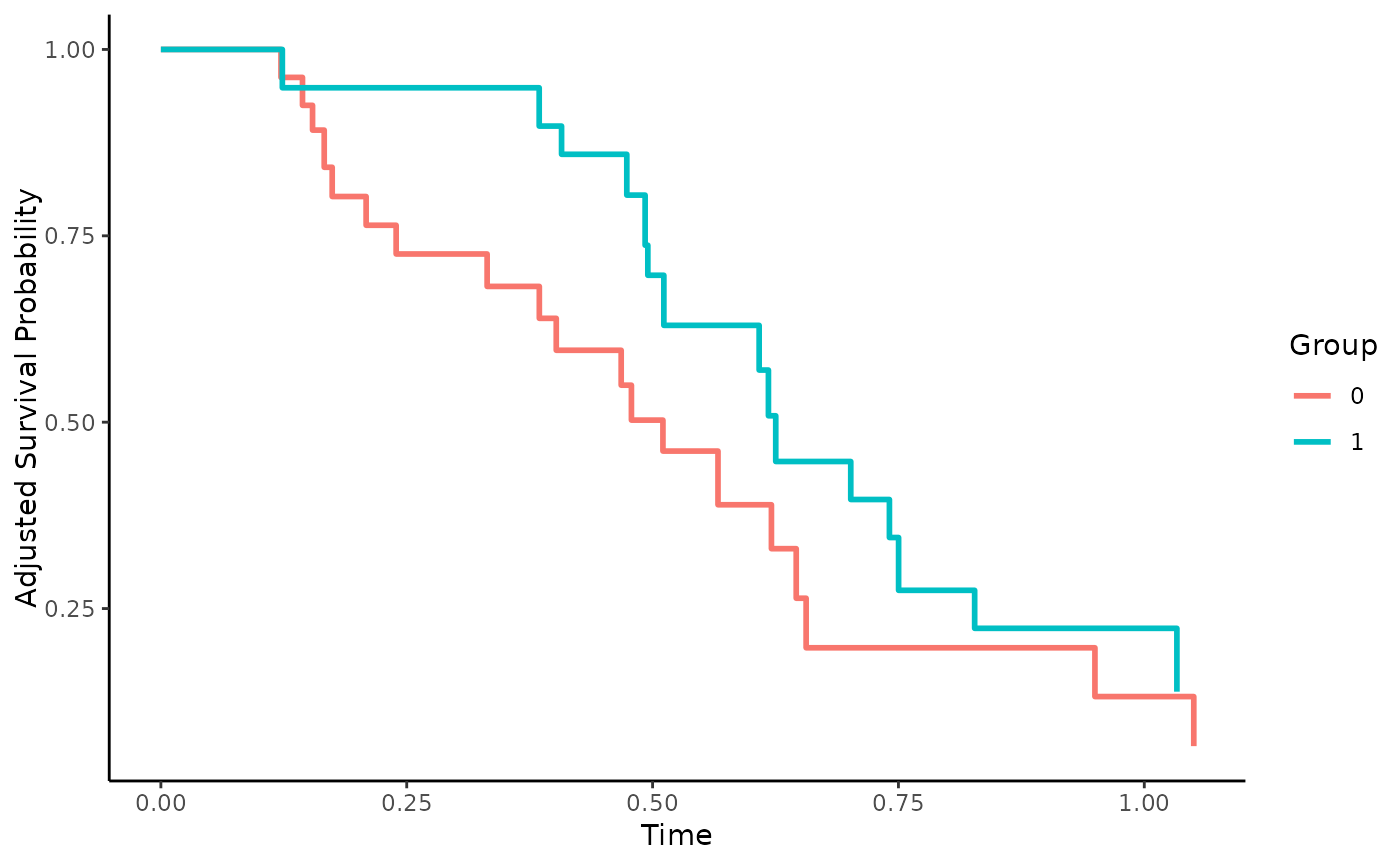
Adjusted Survival Curves for Categorical Confounders using the Method by Amato (1988)
surv_strat_amato.RdThis page explains the details of estimating confounder-adjusted survival curves using a weighted average of stratified Kaplan-Meier estimates using the method described in Amato (1988) (method="strat_amato" in the adjustedsurv function). All regular arguments of the adjustedsurv function can be used. Additionally, the adjust_vars argument has to be specified in the adjustedsurv call. Further arguments specific to this method are listed below.
Arguments
- adjust_vars
[required] A single string or character vector specifying column names in data for which the survival curves should be adjusted for. The variables specified can be integers, factors or characters. Only categorical variables can be used with this method. See details.
- reference
A
data.frameto be used as a reference population when weighting the survival curves orNULL(default). IfNULLthe survival curves are weighted in reference to the full sample supplied usingdata, regardless of thevariablelevel. If adata.frameis supplied it needs to include all variables specified inadjust_vars.
Details
Type of Adjustment: The survival curves are adjusted by calculating a weighted version of the Kaplan-Meier estimator, based on stratification on covariates. This only works for categorical confounders. See below for more information.
Doubly-Robust: Estimates are not Doubly-Robust.
Categorical groups: Any number of levels in
variableare allowed. Must be a factor variable.Approximate Variance: Calculations to approximate the variance and confidence intervals are not available. Bootstrap confidence intervals can however be calculated with all supported models. See
?adjustedsurvfor more information on bootstrapping.Allowed Time Values: Allows both continuous and integer time.
Bounded Estimates: Estimates are guaranteed to be bounded in the 0 to 1 probability range.
Monotone Function: Estimates are guaranteed to be monotone.
Dependencies: This method has no dependencies.
This is one of the older adjustment methods described in the literature. It only works for categorical confounders. If adjustments for continuous confounders are desired, the user needs to explicitly categorize the continuous confounders. It is recommended to use one of the other methods implemented in this package in that case. The method works exactly as described in Amato (1988). The number of people at risk and the number of events in each stratum at each point in time is reweighted and combined into a single estimate for each treatment. The reference data used to calculate the weights is the pooled sample (data) by default, but external reference data can be supplied. A more detailed description can be found in the original article.
If a character vector is supplied in the adjust_vars argument, every possible combination of the variables specified in adjust_vars will be used as strata. This might lead to problems when there are strata with very little data in them. In contrast to other stratification based methods however, this method allows the estimation of adjusted survival curves up to the last point in time at which there is at least one individual at risk in the pooled sample.
Value
Adds the following additional objects to the output of the adjustedsurv function:
Pjs: The weights used for each stratum.
References
David A. Amato (1988). "A Generalized Kaplan-Meier Estimator for Heterogenous Populations". In: Communications in Statistics: Theory and Methods 17.1, pp. 263-286
Examples
library(adjustedCurves)
library(survival)
set.seed(42)
# simulate some data as example
sim_dat <- sim_confounded_surv(n=50, max_t=1.2)
sim_dat$group <- as.factor(sim_dat$group)
# adjust survival curves for some categorical confounders
adjsurv <- adjustedsurv(data=sim_dat,
variable="group",
ev_time="time",
event="event",
method="strat_amato",
adjust_vars=c("x1", "x3"),
conf_int=FALSE)
# plot the curves
plot(adjsurv)
